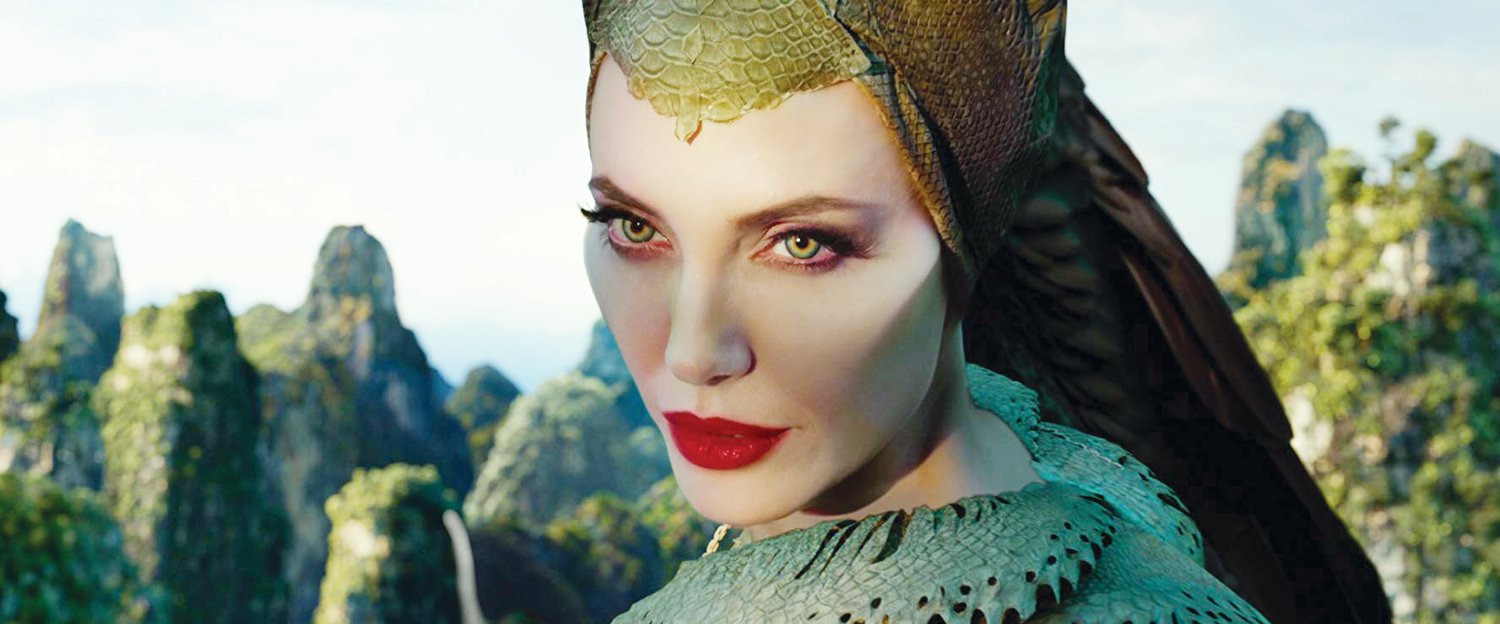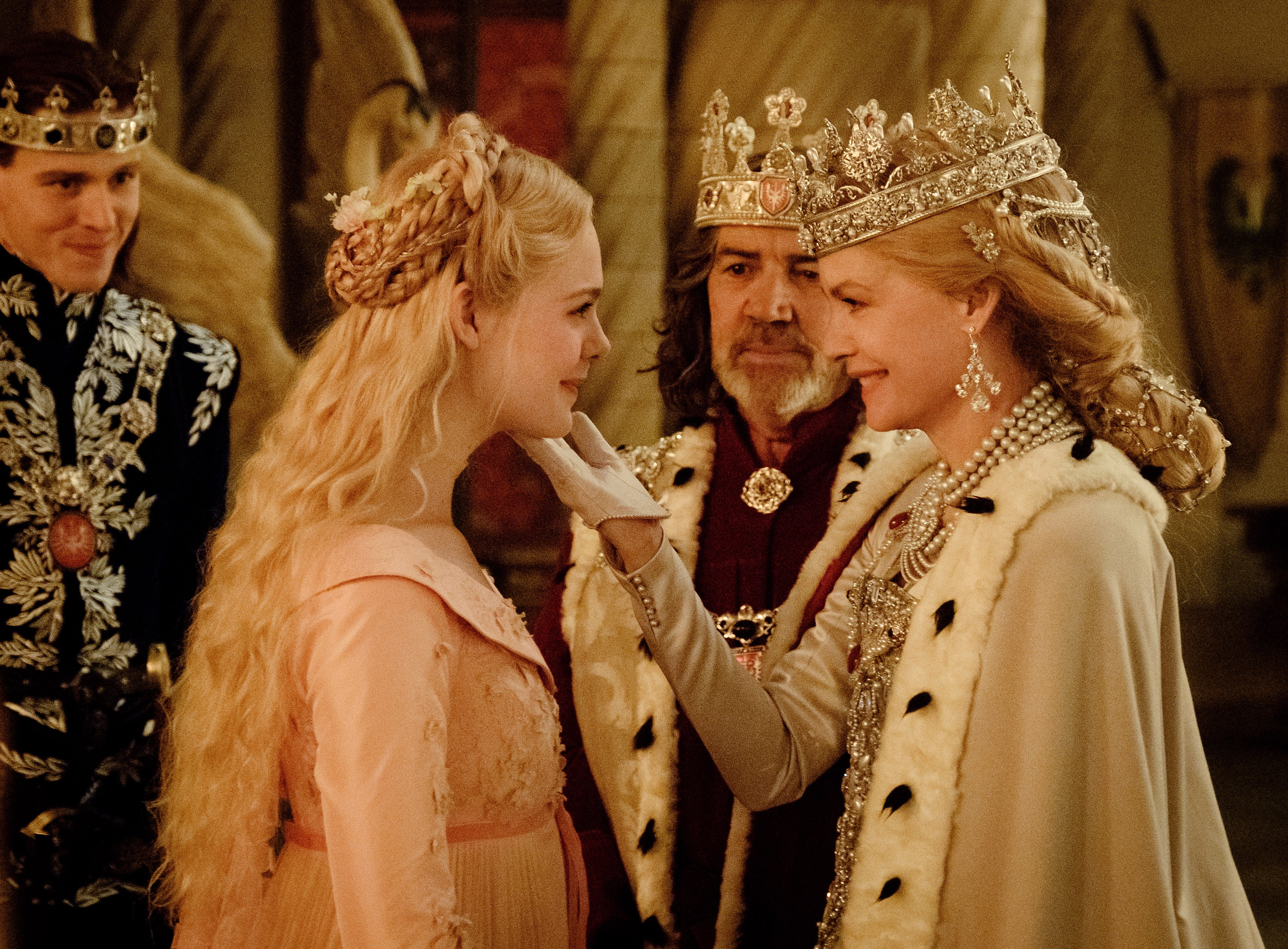
In Brief:
Maleficent: Mistress of Evil attempts to elaborate on the question of who writes history from the first film, by asking how and why harmful histories are perpetuated. It gets rather dark while exploring the consequences of racist narratives: war, massacre, kidnapping, experimentation, the works. Ultimately it doesn’t come to an answer for why some people are racist, except that racists are evil and no-good for no particular reason. And, as the first Maleficent showed us, a narrative which displays a woman as an uncomplicated “mistress of evil” should be rewritten to include- wait a second.
If you enjoyed the first film, you are likely to enjoy this one as well. If you thought the first film presented interesting ideas but was ultimately flawed, this film will make you appreciate the first. Bring your friends for a laugh if you don’t mind getting tired during the final battle.
Full Thoughts:
Maleficent: Mistress of Evil begins by establishing that Aurora is now ruling the Moors (the film’s fey kingdom), while also revealing that humanity and fey are still in conflict. The opening scene sets the tone: two human mercenaries enter the moors to pick what appear to be magical flowers, and are killed by an unknown fey. Later, we will find out that these flowers mark fey graves. In effect, the humans are desecrating a burial site. A cheery start.
The plot begins properly with Prince Phillip proposing to Aurora. The marriage promises to unite the Moors and its neighbouring kingdom, Ulstead, securing a peaceful future. After some motherly opposition to Aurora’s marriage, Maleficent agrees to meet with Phillip’s family. However, Aurora has a suggestion to make the humans more “comfortable”.
Aurora asks Maleficent to wear a scarf to hide her horns. Ultimately, Aurora hopes that Maleficent will hide her racial features in order to avoid offence. This gives the implicit message that the humans’ visual comfort is more important than Maleficent’s right to exist as she is. Maleficent agrees to this, and in a comic scene practices social etiquette for the meeting, which clearly does not come naturally to her. When Maleficent attempts to behave “properly” among the royals, she is awkward and stilted. Even her smile appears unnatural.

The racial commentary continues with the royal dinner scene. Phillip’s mother, Queen Ingrith, employs a technique often used against minorities, especially those labelled as “aggressive”. She provokes Maleficent by insulting her relationship with Aurora and ignoring Maleficent’s positive contributions in favour of a fey-negative history. Maleficent corrects her, showing restraint at first, but eventually her anger cannot be contained. It should be noted that when Maleficent is accused of killing the two humans found dead on the moors, she replies that fey have similarly gone missing.
When Maleficent is pushed too far, Queen Ingrith takes advantage of the moment of panic to curse her husband (using the same spindle of the previous film) into eternal slumber, and blame it on Maleficent. Maleficent denies her involvement, but for some reason Aurora feels inclined to believe racist strangers over her Godmother.

From here, the film diverges to follow Maleficent and Aurora separately. Maleficent discovers her origins in a group called the dark fey. The dark fey are vaguely tribal in their dress and culture, though notably racially diverse in appearance, and are apparently abundant in various hot climates: particularly the desert and rain forests. Racial parallels are easily drawn. After one of their number is killed by a human’s crossbow, the dark fey are compelled to declare war on humanity. Maleficent shows no strong feelings one way or the other towards this, despite her daughter living in the very kingdom her people plan to attack.
Meanwhile, Queen Ingrith’s hatred for fey is elaborated upon. Several scenes involving her and Aurora show the Queen’s need to erase all fey culture from Aurora. The Queen convinces Aurora to wear a traditional, passed-through-generations wedding dress over the flowery and butterfly-covered dress she had planned on. Her arguments, of course, are not based on the inferiority of fey culture, but on her desire for Aurora to carry out their kingdom’s traditions.

(Literally) beneath these more subtle actions, the Queen has created an anti-fey weapons factory under the castle. It is accessed in appropriately camp style: by cracking the neck of a mannequin. She has employed a scientist, a fey himself, who has invented a powder which causes instant death to fey creatures. She plans to utilise her instant death powder on all fey at her son’s wedding.
And so we move on to one of the film’s most important scenes. All fey are invited to Aurora and Phillip’s wedding, and are led (with complete ignorance, despite their knowledge of the war between their kingdoms) into a church which is then locked. The Queen’s servant then plays an organ which triggers the release of the death powder, in an over-the-top parallel to a gas chamber. Indeed, many fey do die inside this musical death machine, including one of Aurora’s three fairy godmothers.
Meanwhile, the dark fey begin their assault. They are similarly defenceless against the death powder. Dark fey explode in the air like fighter jets, and we hear their friends cry in agony at their deaths. This scene, especially presented in tandem to the church scene, gives the impression of a one-sided massacre.

The plot then tumbles around in incoherence for several minutes of warfare. Aurora discovers the truth of who cursed the king by touching the spindle – apparently the spindle has “curse memories” it can share with Aurora. Aurora also comes across the Queen’s fey scientist, and asks why he would perform experiments intended to kill his own kind. She asks if the Queen “took his wings”, and his silence answers yes. This is quite an interesting reason for the film to give, especially since in the first Maleficent wings were used as a metaphor for one’s virtue. King Stefan cutting off Maleficent’s wings while she slept served as a clear rape metaphor: a man takes advantage of Maleficent’s love and trust, taking something from her which leaves her physically less powerful, less like the free-flying child we meet at the film’s beginning. Is Maleficent: Mistress of Evil implying that this scientist was the victim of a similar allegorical rape? Does this explain why he would aid in the genocide of his people?
Regardless, Aurora goes to attempt to convince the Queen to call off the attack. The Queen is not phased by Aurora’s pleas, and pushes her from the tower. Maleficent luckily appears to save her daughter, but is unfortunately hit by the death powder. Even more luckily, Maleficent is revived. We are lead to believe this is because she is the incarnation of a mythical phoenix-like figure in dark fey culture. This is what apparently provides her magical ability (a different magic from the magic employed by the other dark fey – the difference appears to mainly be the colour).
Meanwhile, Phillip runs around the battlefield, attempting to free the fey trapped in the church. He is attacked by a dark fey, and after he and the Queen’s army commander overpower the fey, Phillip decides to show the fey mercy. He makes a speech to the surrounding humans and fey, which appears to stop all fighting. He is joined by Aurora, and it appears that the war ends simply by Phillip convincing all involved to stop fighting.
And so, with the Queen comically transformed into a goat and the king revived by Maleficent, the massacre is forgotten in favour of an immediate cross-cultural wedding. Everyone seemingly approves of this. The instant death powder and the fey lives lost are forgotten, the compliance of the soldiers is forgotten, and even the death of the blue fairy godmother is treated as, well, not so bad.
The ultimate moral of Maleficent: Mistress of Evil appears to be similar to the first film, but elaborated upon. While the first film explored an alternate history, the second film attempts to answer how and why harmful histories are perpetuated. Sadly, its answer amounts to the fact there are racists in this world, and those individual racists will manipulate history to suit their ultimate goal of genocide.

Why is Queen Ingrith racist towards the fey? She apparently resents the fey due to a period of time where her kingdom suffered while the fey remained content. Her resentment doesn’t appear to be due to the lack of aid offered, but simply a sort of national jealousy. It appears she felt it was unjust that the fey were happy while her kingdom starved. This alludes to perhaps an even deeper-seated feeling of superiority, but the film doesn’t explain why the Queen might feel superior. Now, the humans of Ulstead appear to motivated by fear. The history of dangerous fey has been ingrained into their culture.
What leads a racist from hatred towards a plan for mass genocide? The film has no answer. Queen Ingrith is simply an evil woman. Not like Maleficent.